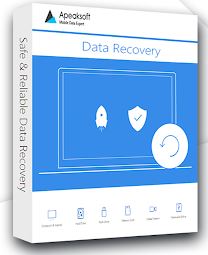How to use Data Recovery Software
In very many cases of data recovery and rebooting of your PC you can do little about it immediately and you also have to install the latest version of that program to fix it. First see if the program in question can work on Windows or Mac. Files with the extension EXE do not work on a Mac and everything that ends with DMG or APP is not suitable for Windows. Sometimes a manufacturer also offers a patch, a small piece of extra software for adaptation which makes the program usable. Users of Office 2003, for example, can download such a patch via Microsoft so that their version of Word, Powerpoint etc. can open the .DOCX and PPTX files. So don’t give up, but search the Microsoft and Apple sites for such patches. For example, enter Office as the patch search term. Using a data recovery software will be perfect there.
Opening files
You must have experienced it: a file has been downloaded and after the double click nothing happens or the system says that there is no application to open the file. This often happens with PDF files and the solution is very simple: get a PDF reader and install it. Adobe PDF Reader is good and also free.
If your Office version is on the older side, you may not be able to open DOCX and PPTX files. They are part of the more recent versions of Microsoft Office. You can get a patch for this via the Microsoft website if you cannot or do not want to purchase a newer version of Office.
For all other situations, you can still let the system look for a suitable solution itself. This can take a while and a solution is not always found. If it is important and you know who made the program, you can possibly inquire there if there is a version that is suitable for you or maybe still being made.
Deleted Data
If you notice that files have been deleted or disappeared without a clear explanation, do not create new data, move files or save new data. If you do follow these steps, you reduce the chance of a complete recovery. If you use a Recovery program, which we do not recommend, do not install anything on the disk from which the data has been lost.
Clicking, scratching or ticking sounds
Turn off your system immediately if you notice that your hard drive is making clicking, scratching, or other strange noises. If you don’t, there is a good chance that the disc will be seriously damaged.

Make an overview of the latest actions
Note exactly what happened. Try to make an overview of the files that are important to you. Check whether a backup is present.
Avoid high or low temperatures
Do not expose your hard drive to extremely hot or cold temperatures. Constant heat can shorten the durability of your hard drive, reduce performance and damage the electronic components.
Stable, clean and safe environment
Do not place your computer in an unstable or mobile location. Any shock or bump can damage the hard drive during operation. It is extremely important to find a stable and safe place for your computer.

